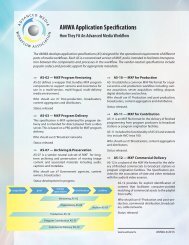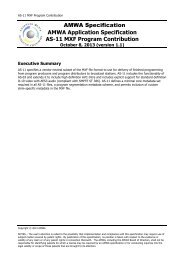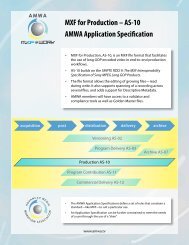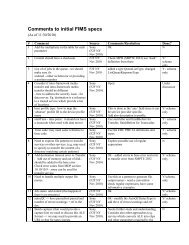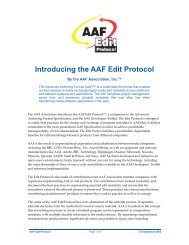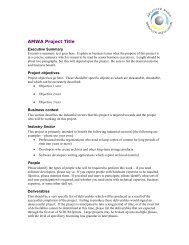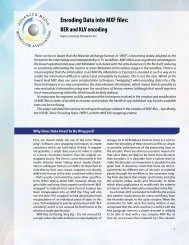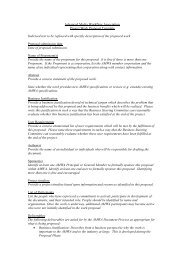Create successful ePaper yourself
Turn your PDF publications into a flip-book with our unique Google optimized e-Paper software.
<strong>FIMS</strong> <strong>Media</strong> <strong>SOA</strong> <strong>Framework</strong> Phase1 (Preliminary)7 <strong>Media</strong> Service Awareness7.1 Service registryA service registry provides support for publishing and discovery of services, acting as a central repository for allservices metadata. Furthermore, the service registry enables service virtualization, supporting selection ofservices at runtime according to static service characteristics (e.g. QoS, cost) and real-time performance data(e.g. CPU utilization, disk space, queue length). Service requestors submit semantic queries to the serviceregistry to locate services with the required processing capabilities (e.g. finding a transcoder for video content)and media format support (e.g. the transcoder should support DV25 in input and MPEG-4 on the output). Theservice registry establishes a central point for finding and managing service metadata. Part of the metadatamay constitute policies or SLAs that constrain and drive different aspects of <strong>SOA</strong>. For example, a user maydefine security policies and relate them to the services that are defined in the service registry. Another examplewould be to describe Service Level Agreements (SLA) and bind them to service providers and consumers as partof the overall service information model managed by the registry.This <strong>FIMS</strong> specification does not address the service registry implementation, which may be vendor-specific.This document rather focuses on key concepts and features that should be available to the framework.A service registry should support the following features:• Find: Search/browse for services with varying degrees of criteria driven by any metadata associatedwith the service• Publish: Add new services through an approval process to be available and managed in an enterprisewidescale• Subscribe: Register to listen to any changes to the metadata associated with the services• Manage lifecycle: Provide customizable processes to manage the lifecycle of services in the registryenabling access control, promote/retire and analyze changes to services through impact analysesA service registry enables searching service information, supporting reuse of common services. A commonexample of service information gathered or searched in these phases would be documents conforming to theWeb Services Description Language (WSDL) or XML Schema Definition (XSD) standards. Architects anddevelopers can also annotate this technical information in the registry and repository with extra informationusing formal classification techniques, such as using the Web Ontology Language (OWL) standard [REF2], or byadding other content defined following XSD standards. Such classification of services allows for meaningfulgroupings of the services based on business objectives.The implementers of a service registry must consider the scope with which the registry will be implemented. Forexample, there are public service registries available over the Internet to an unrestricted audience, as well asprivate service registries that are only accessible to users within a company-wide intranet. A service registryprovides the infrastructure mechanism to discover a service; however, a service provider has to provide theappropriate information to make the service discoverable. In addition to content directly related to servicedescription entities (e.g. WSDL), a service registry should support a number of user-defined metadata typesthat are used to decorate the service description entities to explain their semantics; we refer to those metadataas service description metadata. There are three types of service description metadata types:• Properties are name/value pairs that are associated with any of the service description entities. Someproperties are assigned by the system, such as the unique id, the owner, and the last time the serviceentity was changed. These system-assigned properties cannot be changed. Others are derived throughthe parsing of a key-type service description document into its logical model. Properties of this typeinclude name and namespace. Properties can be used in queries during the service discovery process.• Relationships describe the dependencies between entities of the standards-based service definitiondocuments such as WSDLs and schemas. Relationships can be used to attach rich semanticsdescriptions such RDF documents to services document entities.Private committee documentWorking Draft for review by <strong>FIMS</strong> Rev v1, Nov-16-2010 Page 27 of 89



